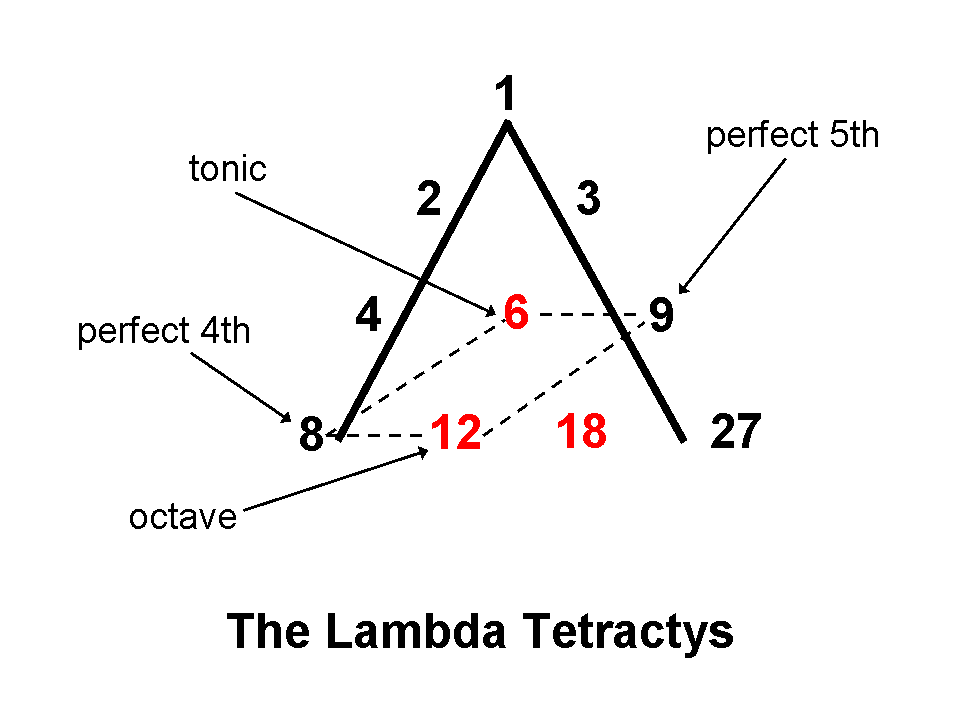
| << Previous 1... 4 5 [6] 7 8 ...45 Next >> |

Plato's Lambda is but two
sides of a tetractys of 10 integers, which we shall call the "Lambda Tetractys." The three missing red integers 6,
12 & 18 are interpolated by following the rule that diagonal rows of integers follow the two geometric series
of the integers forming the slopes of Λ, the Greek letter lambda. So 6 is twice 3 and three times 2, whilst 12 is
twice 6 and three time 4 and 18 is twice 9 and three times 6. If
we ignore the speculative cosmological context in which the algorithm of Plato's Lambda for generating the relative
frequencies of the musical notes was presented and regard it and its underlying tetractys purely as a construction
of Pythagorean mathematics, then both are incomplete. This is not simply because the three numbers making
up the tetractys are absent from Plato's account. It is because the numbers 1, 2, 3 and 4 were the basis of
Pythagorean number mysticism and its application to the study of natural phenomena such as musical sounds, whereas
the number 4 is missing as a generative factor from the Lambda, which starts with the number 1 (the
Pythagorean monad) and multiplies it by the factor 2 (the dyad) and the factor 3 (the triad) to generate its
numbers. But what about the tetrad?
| << Previous 1... 4 5 [6] 7 8 ...45 Next >> |